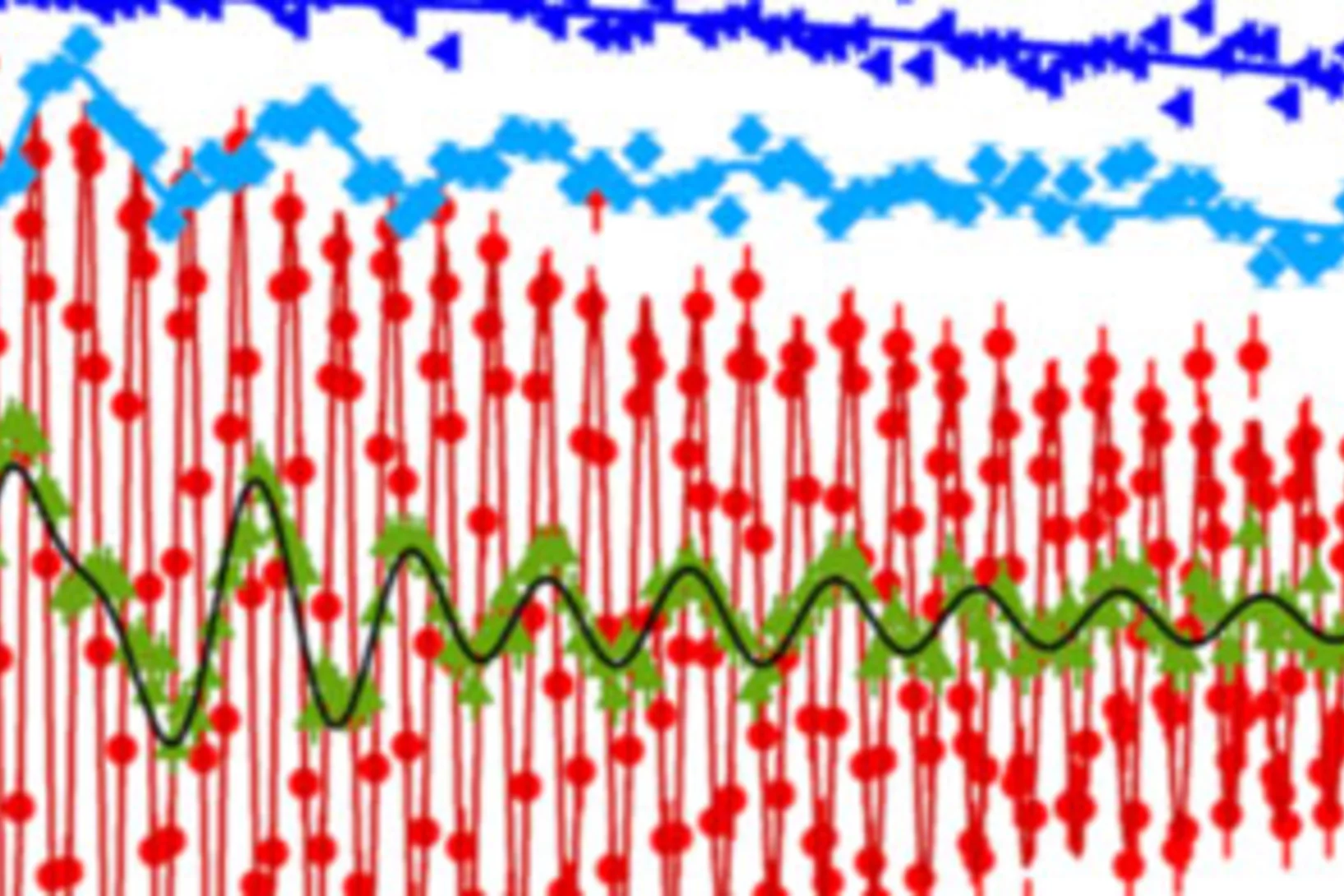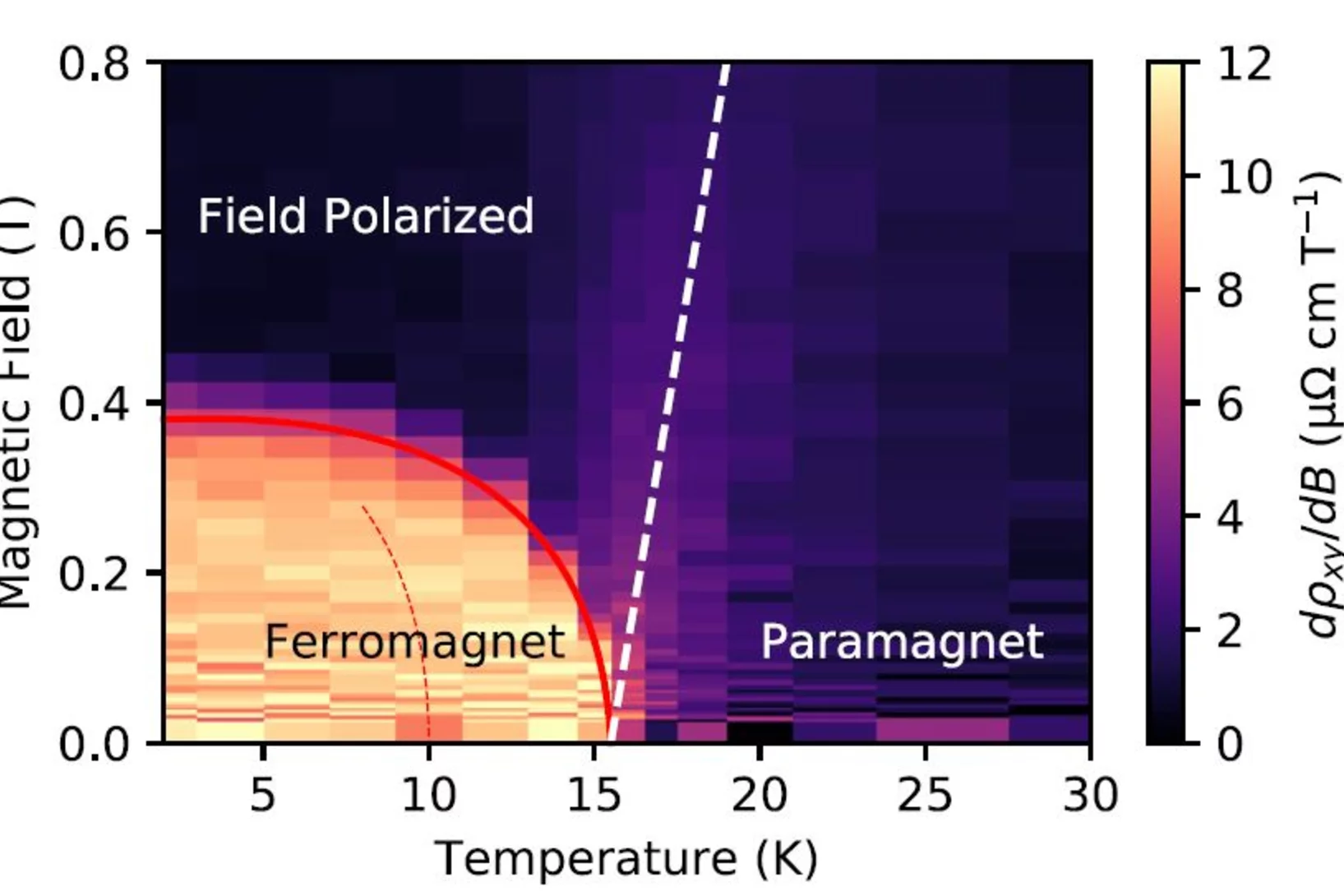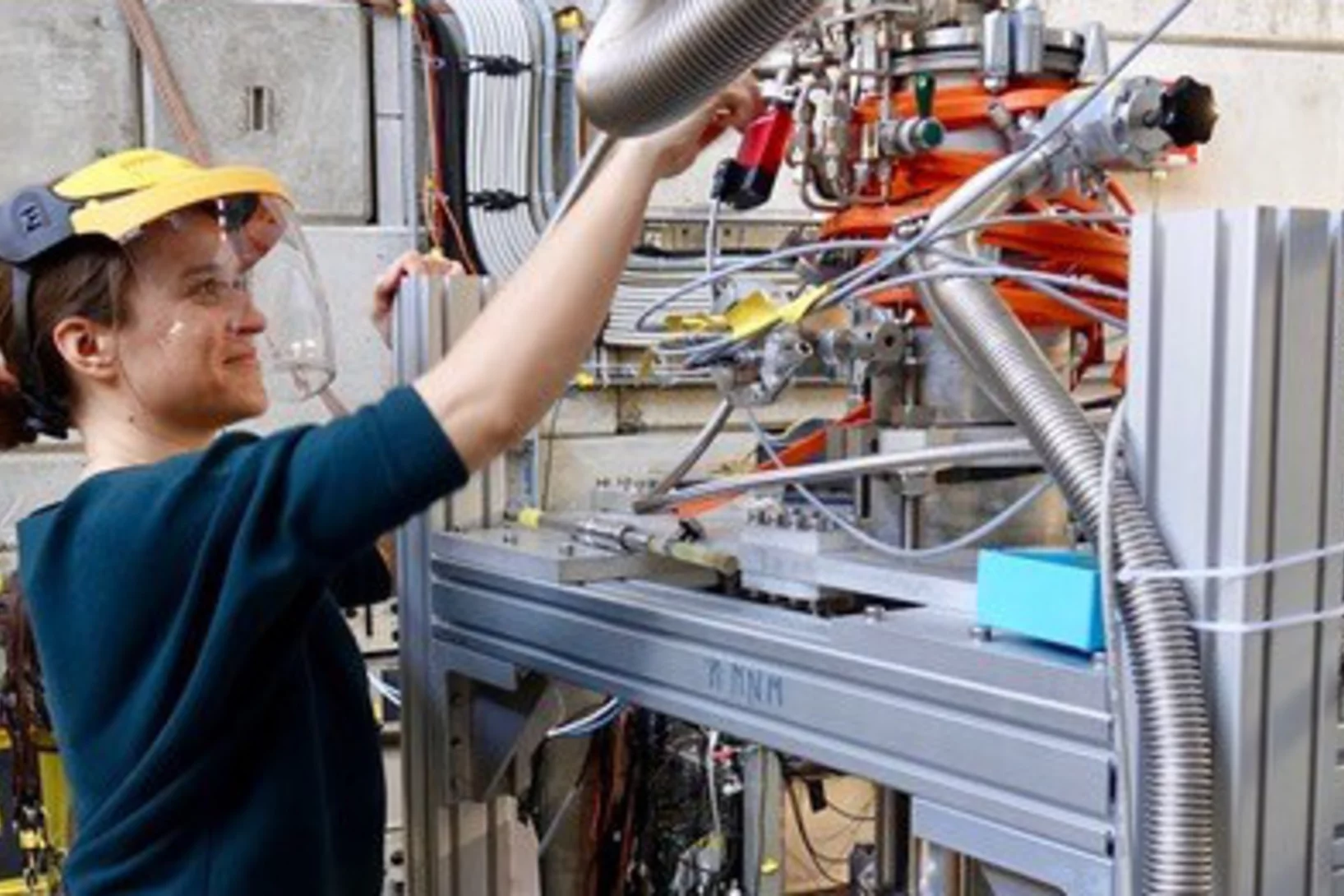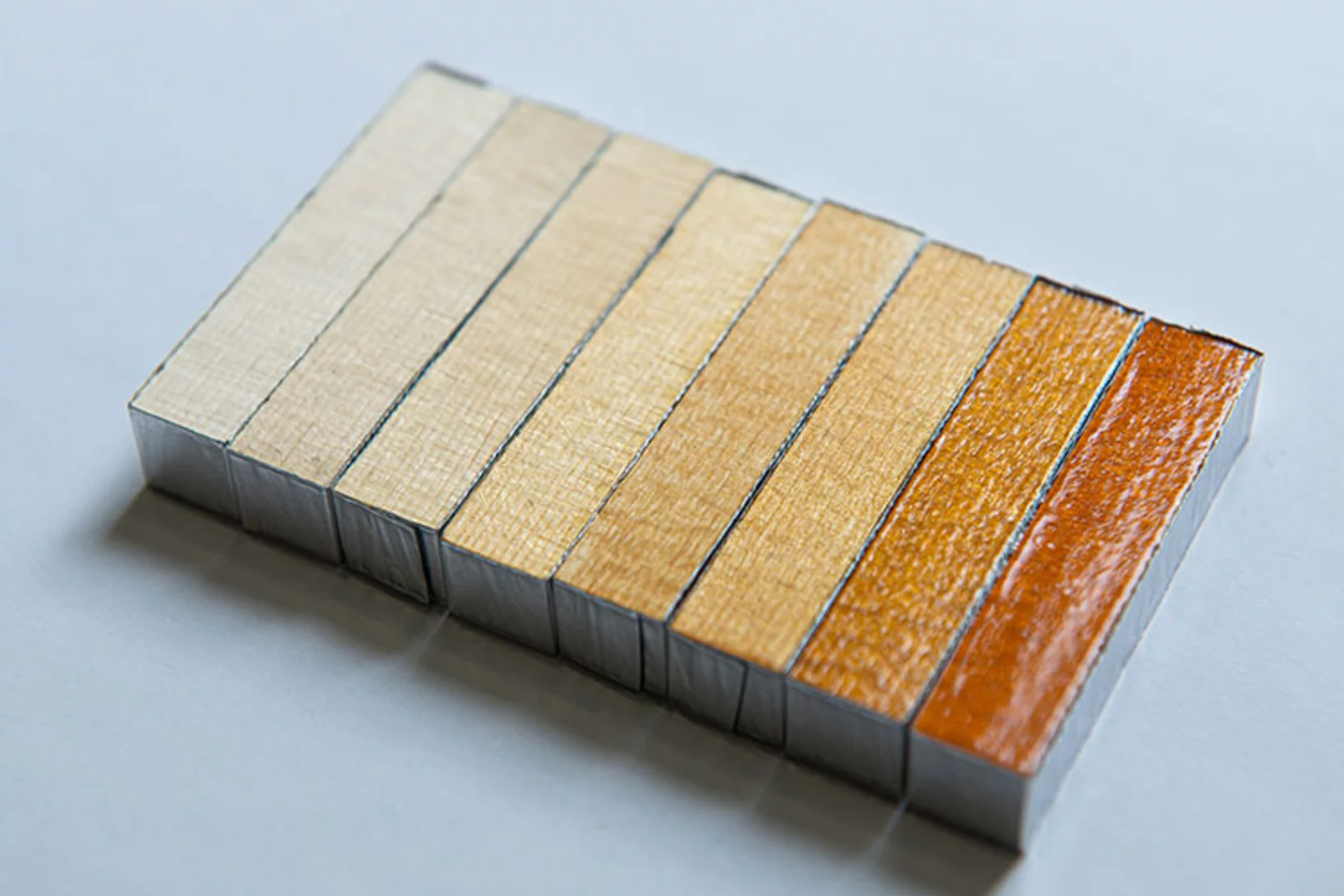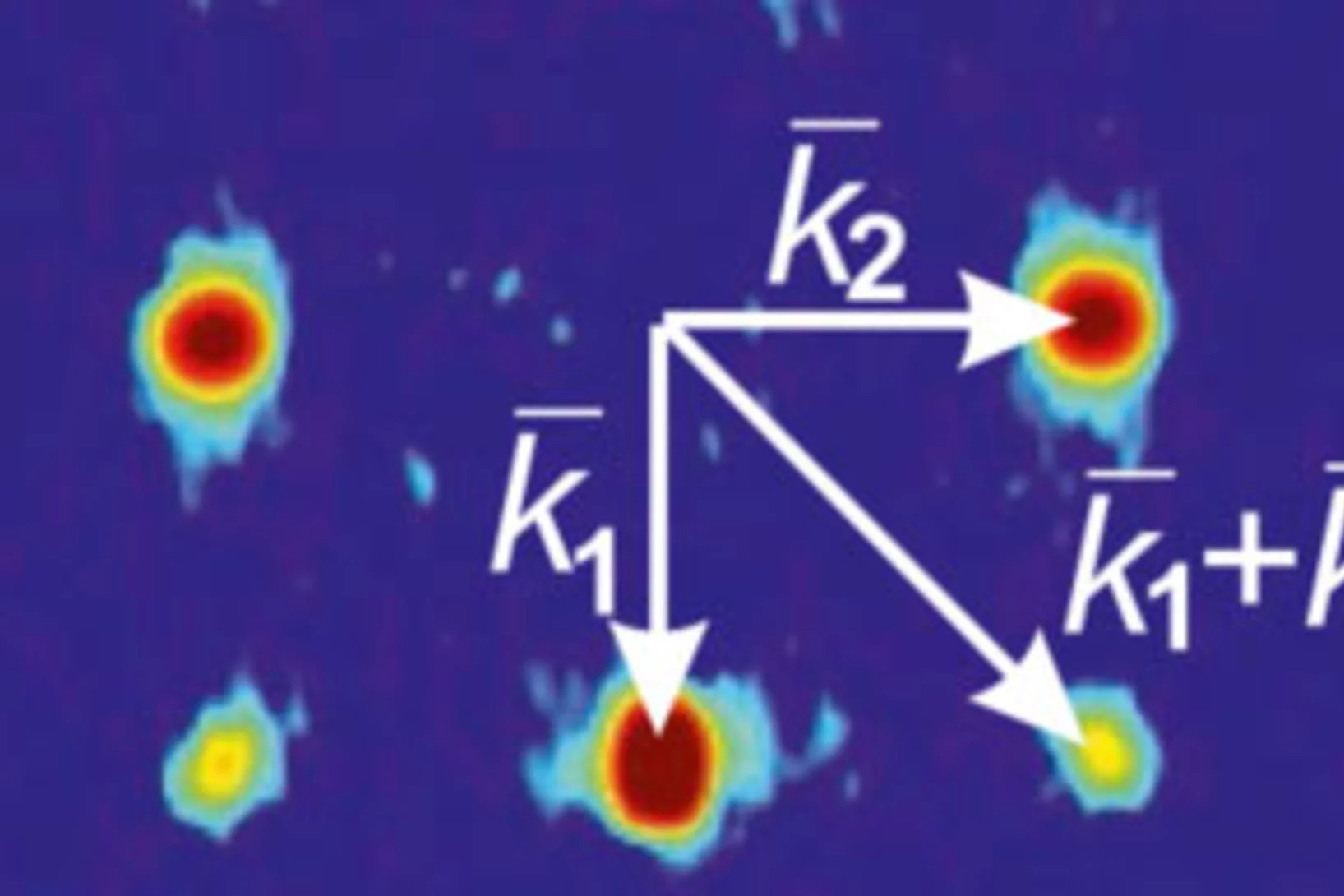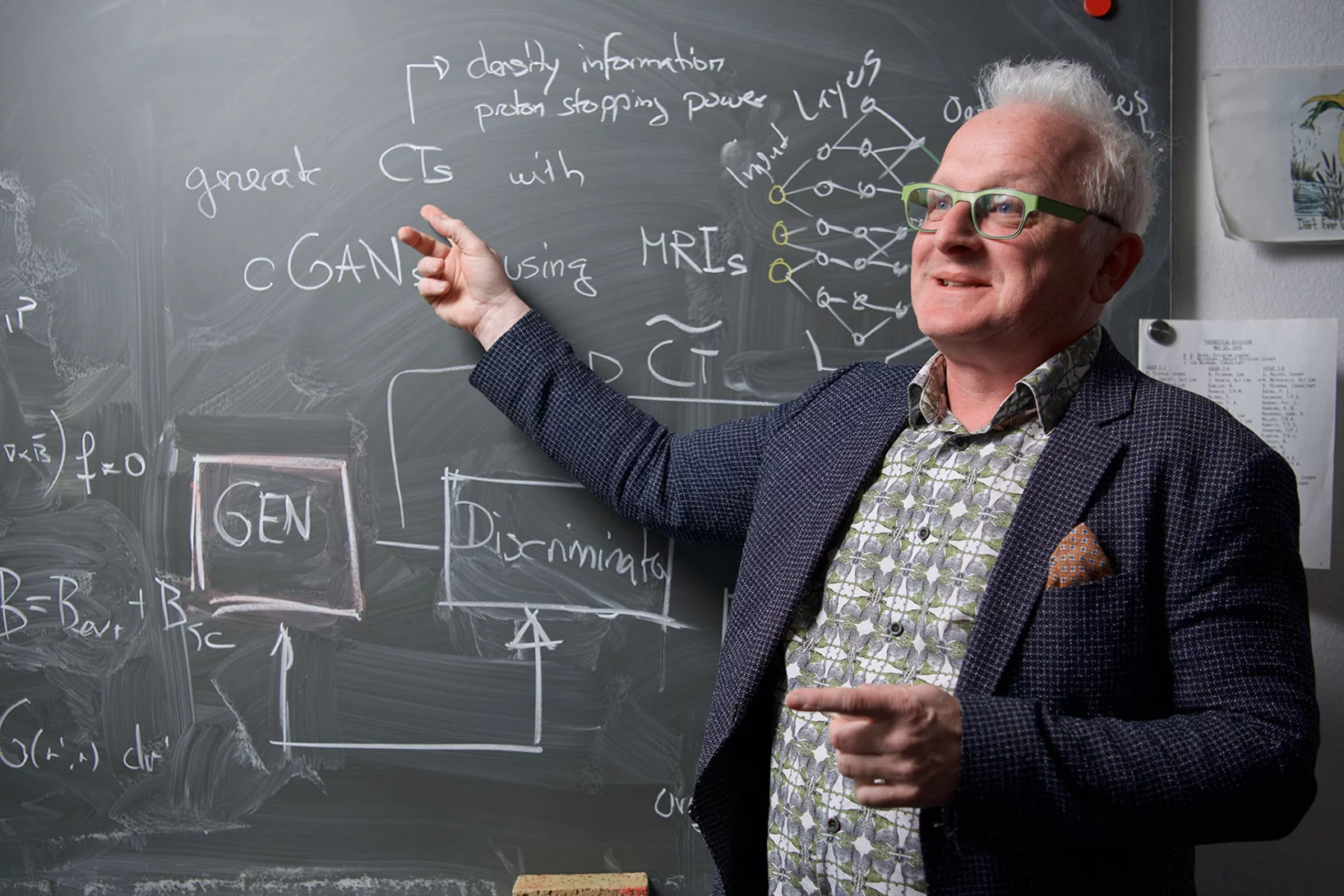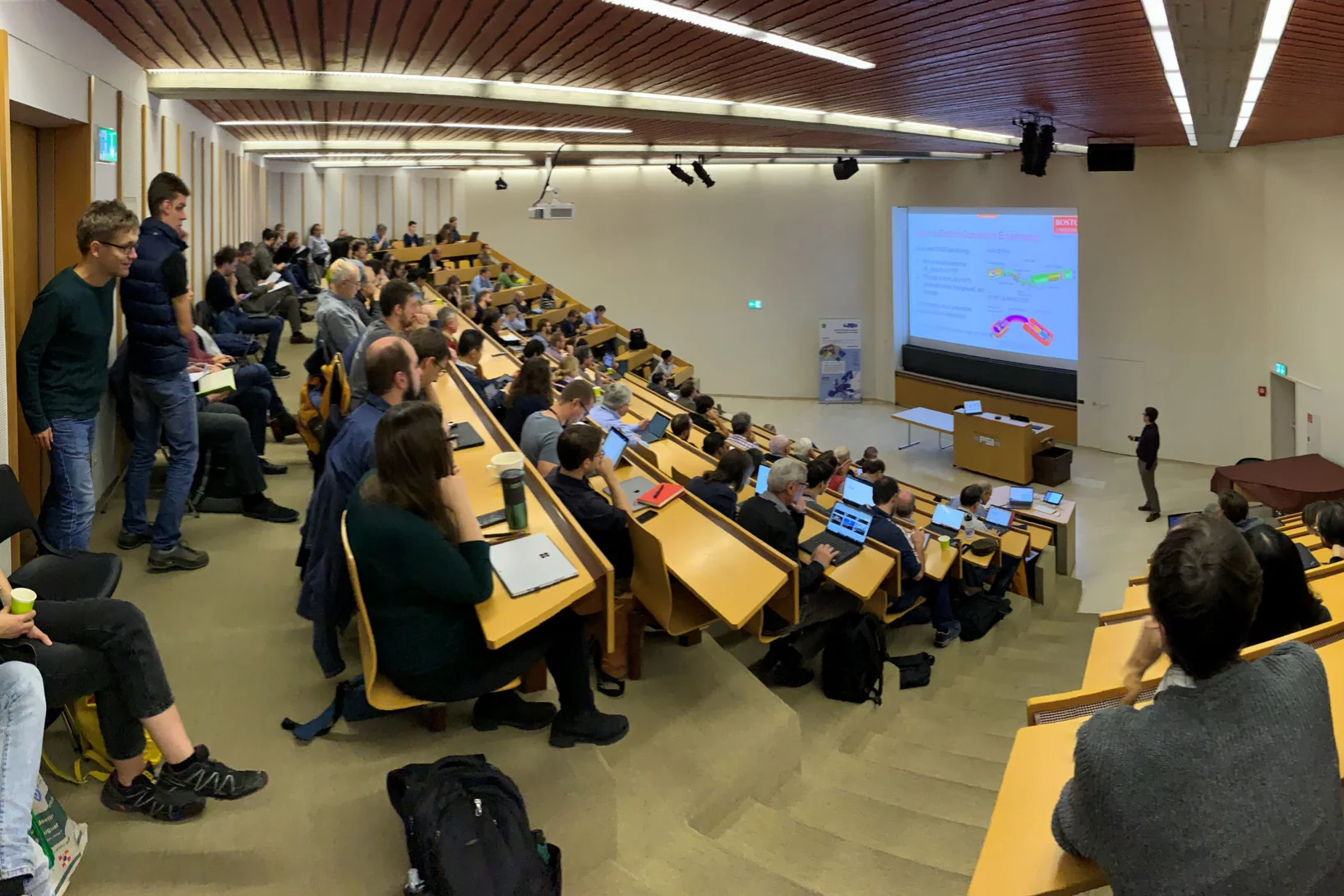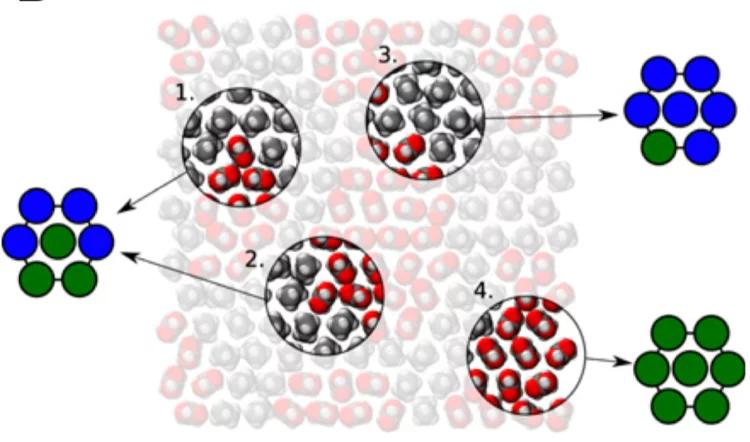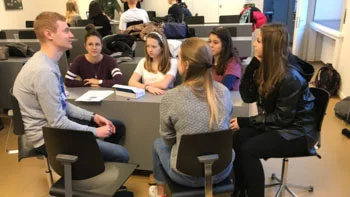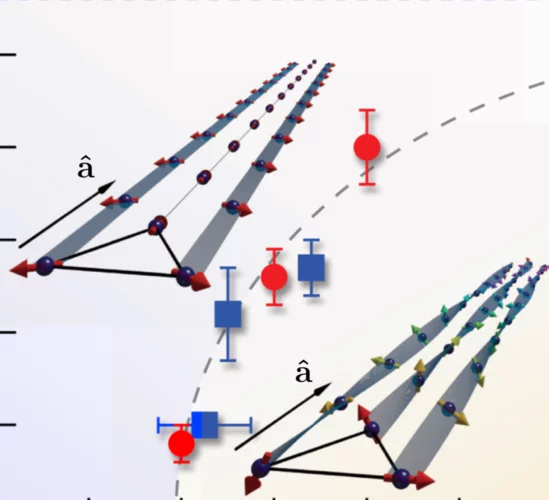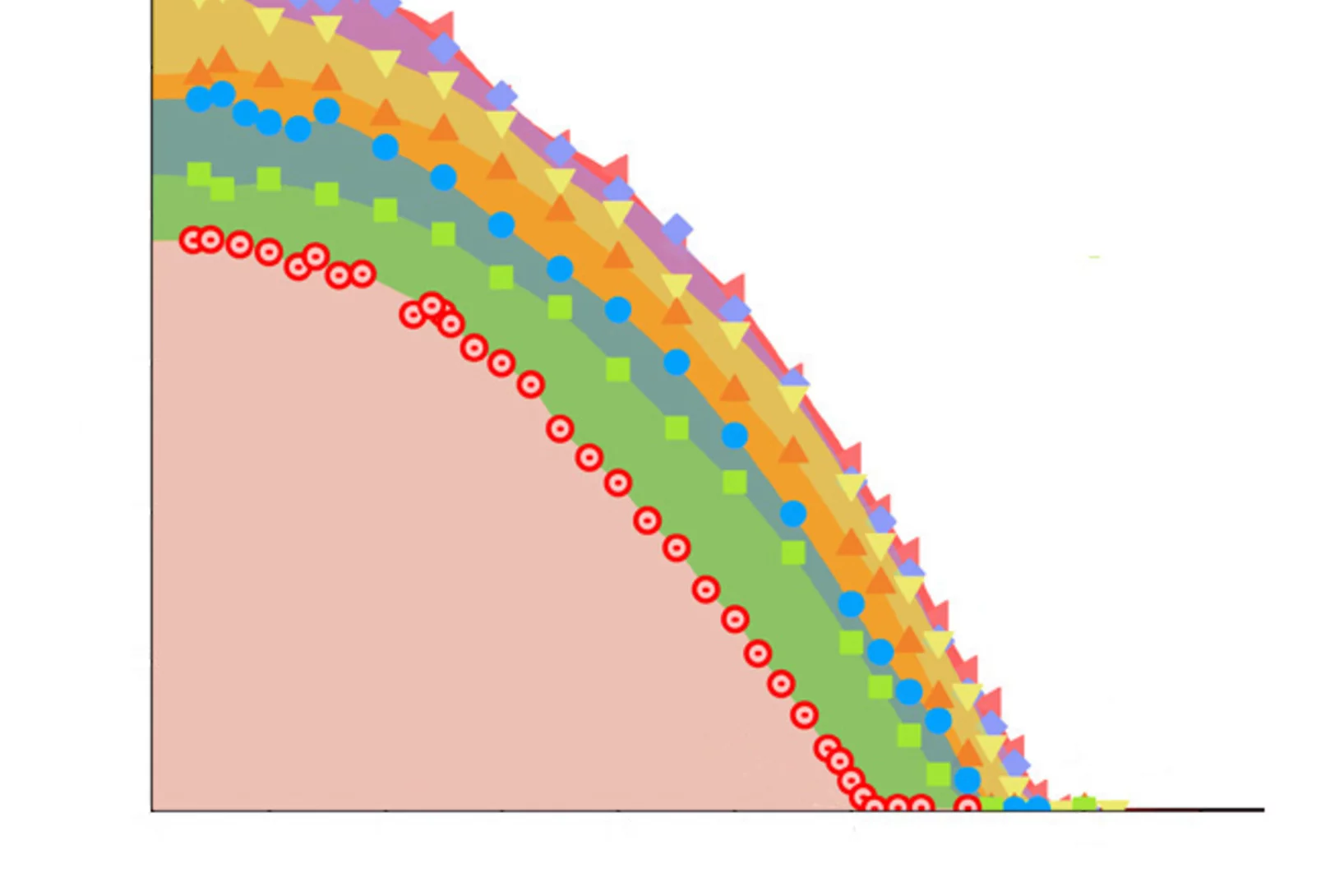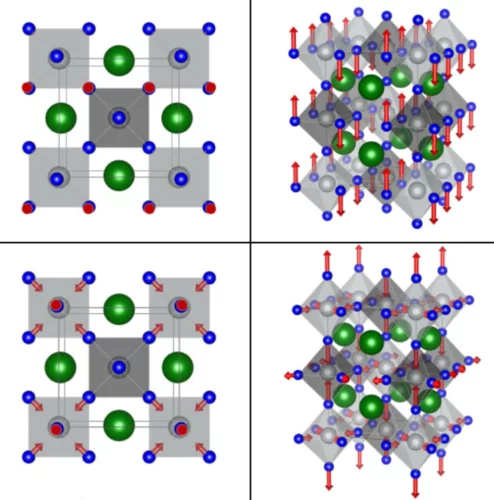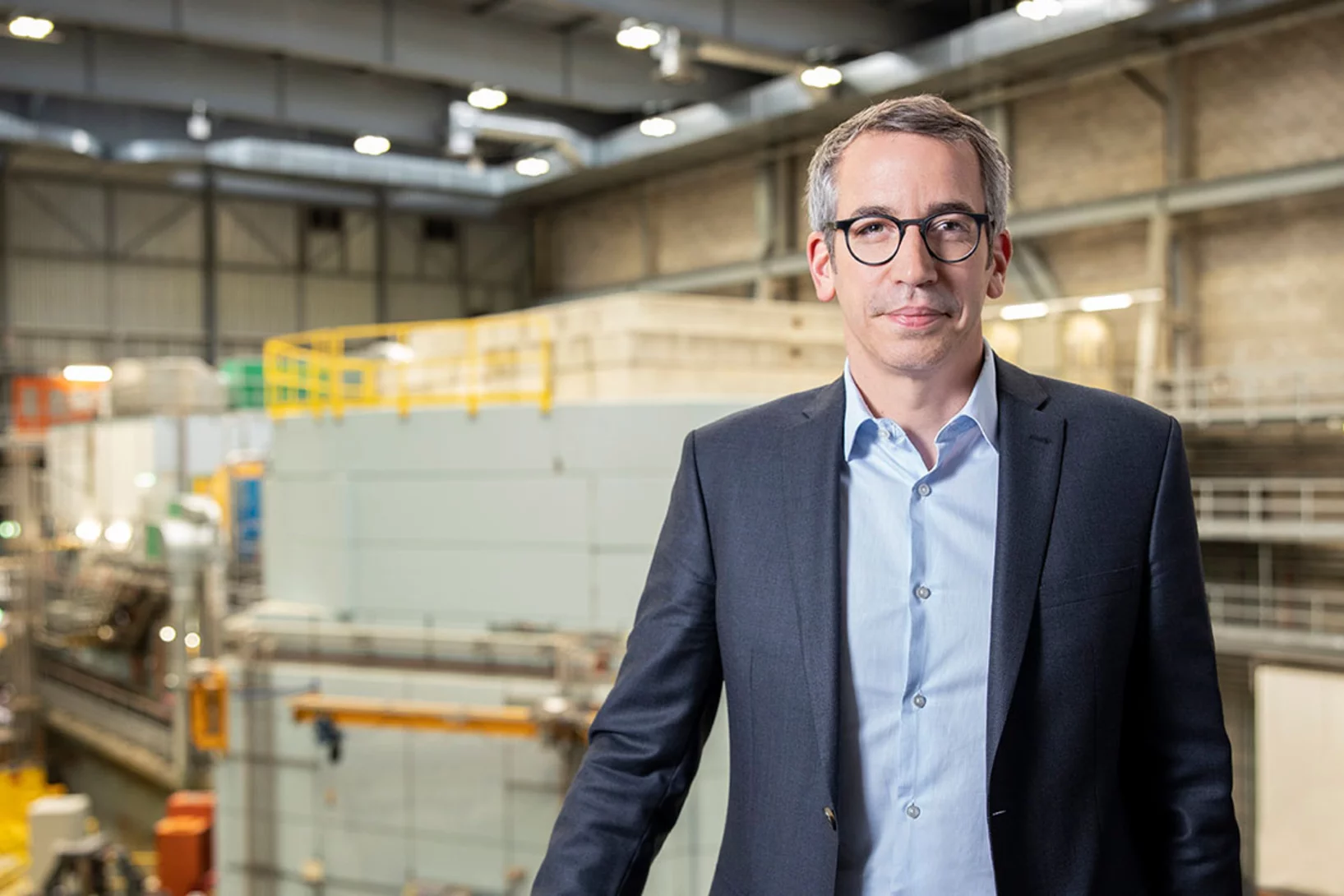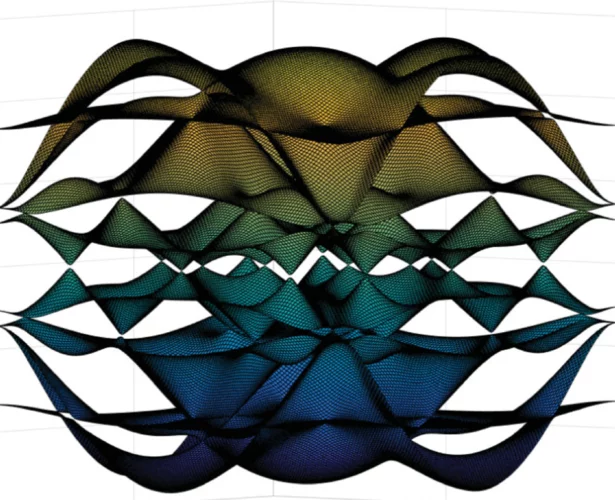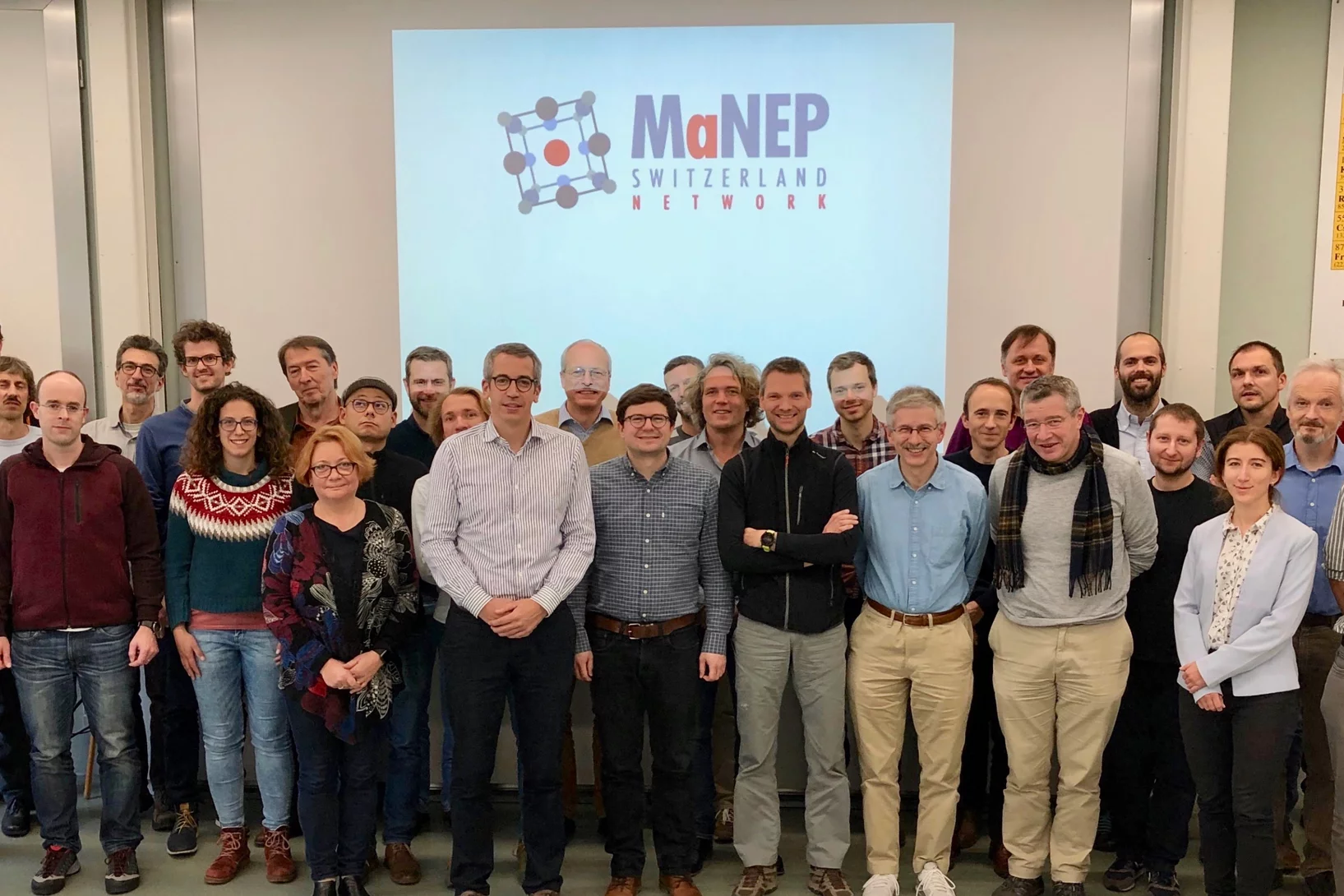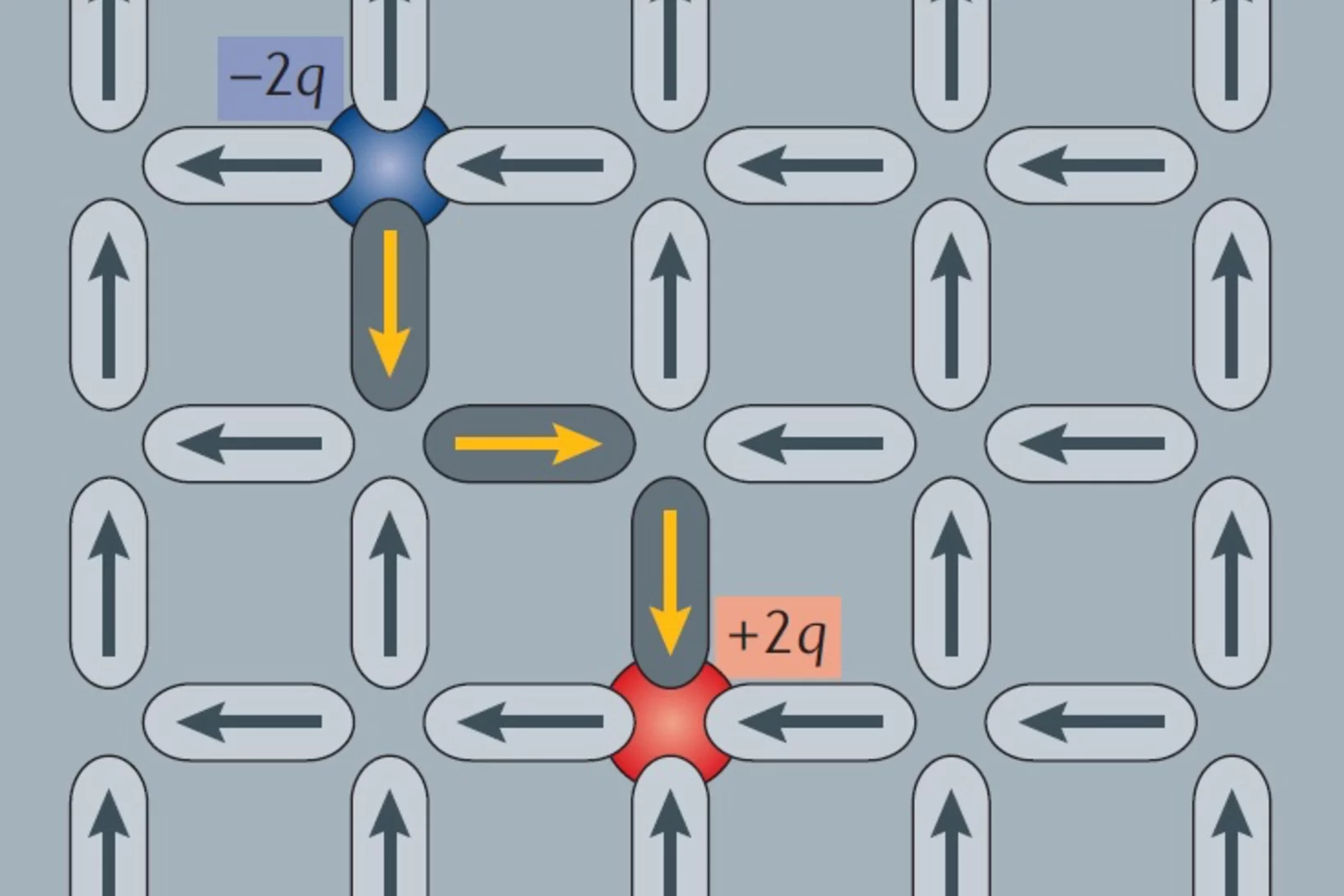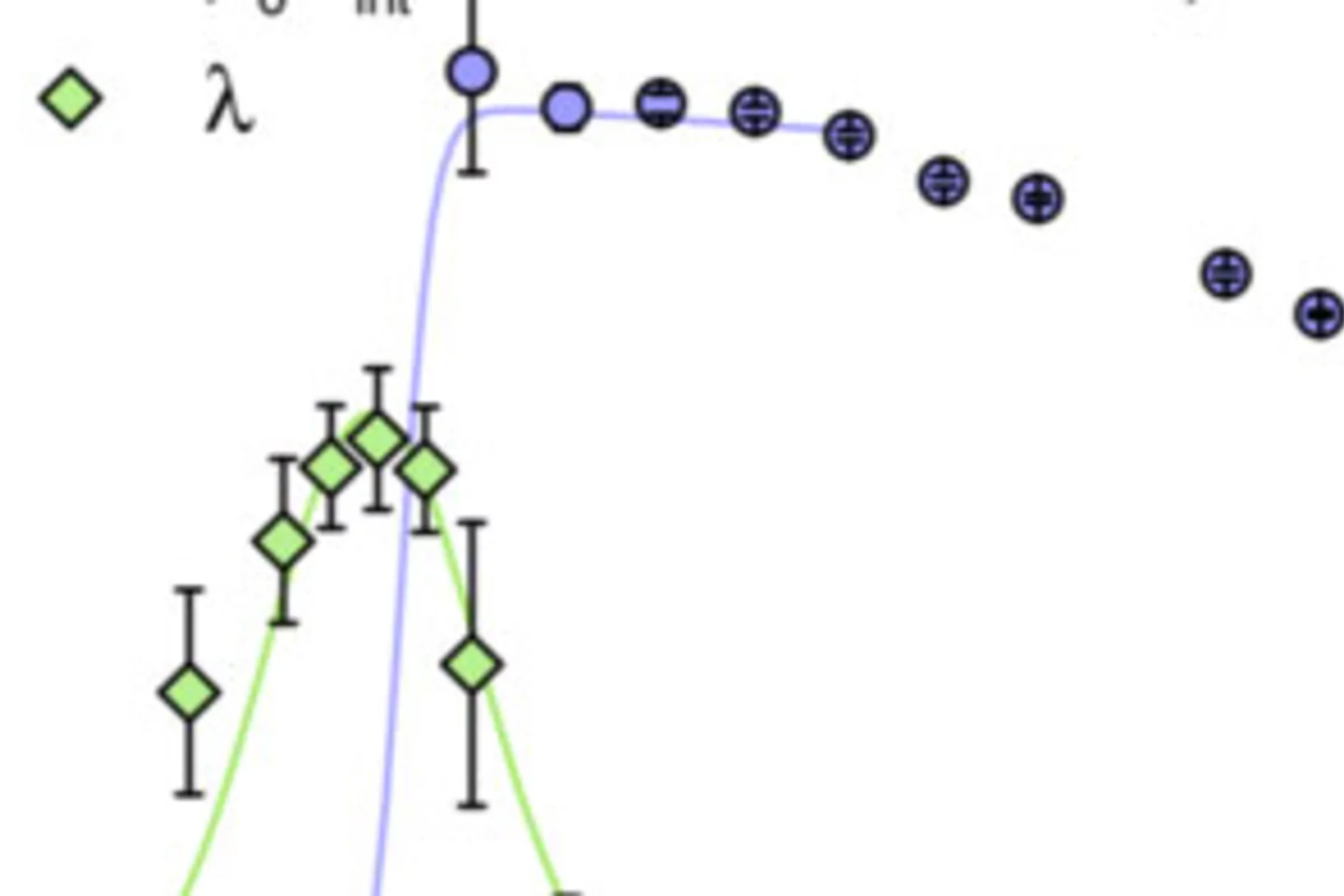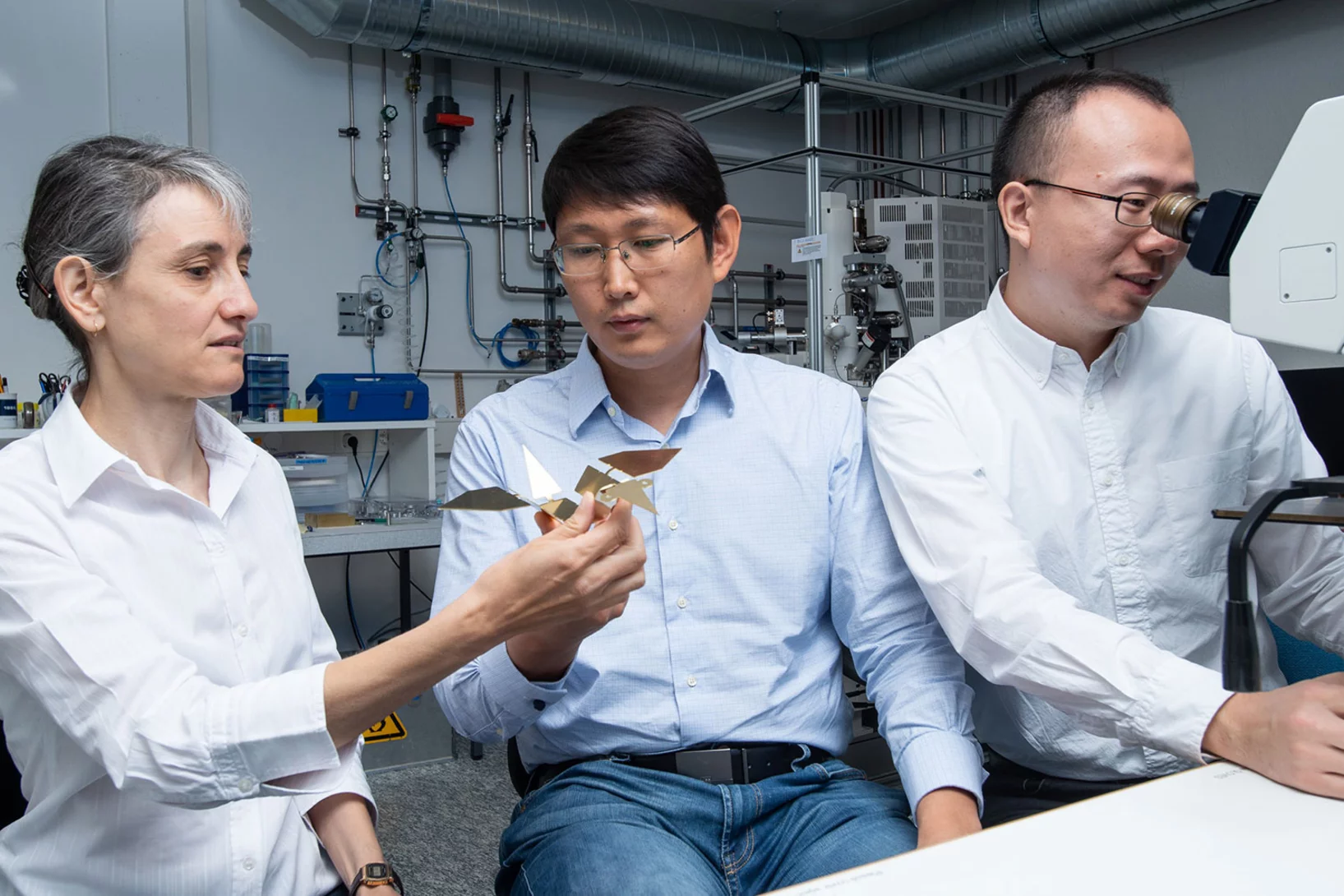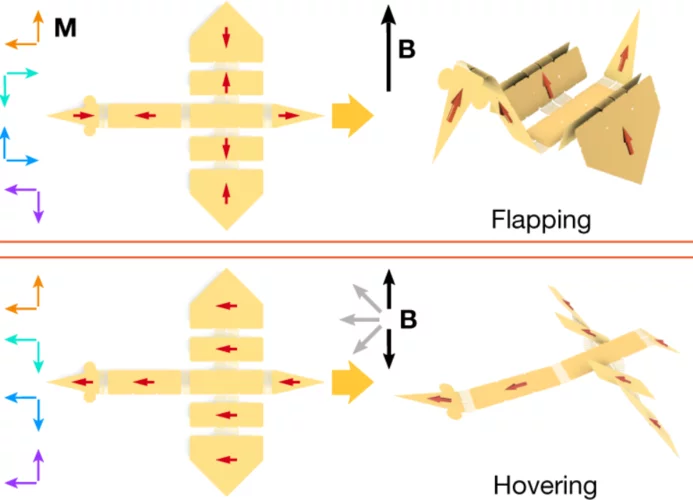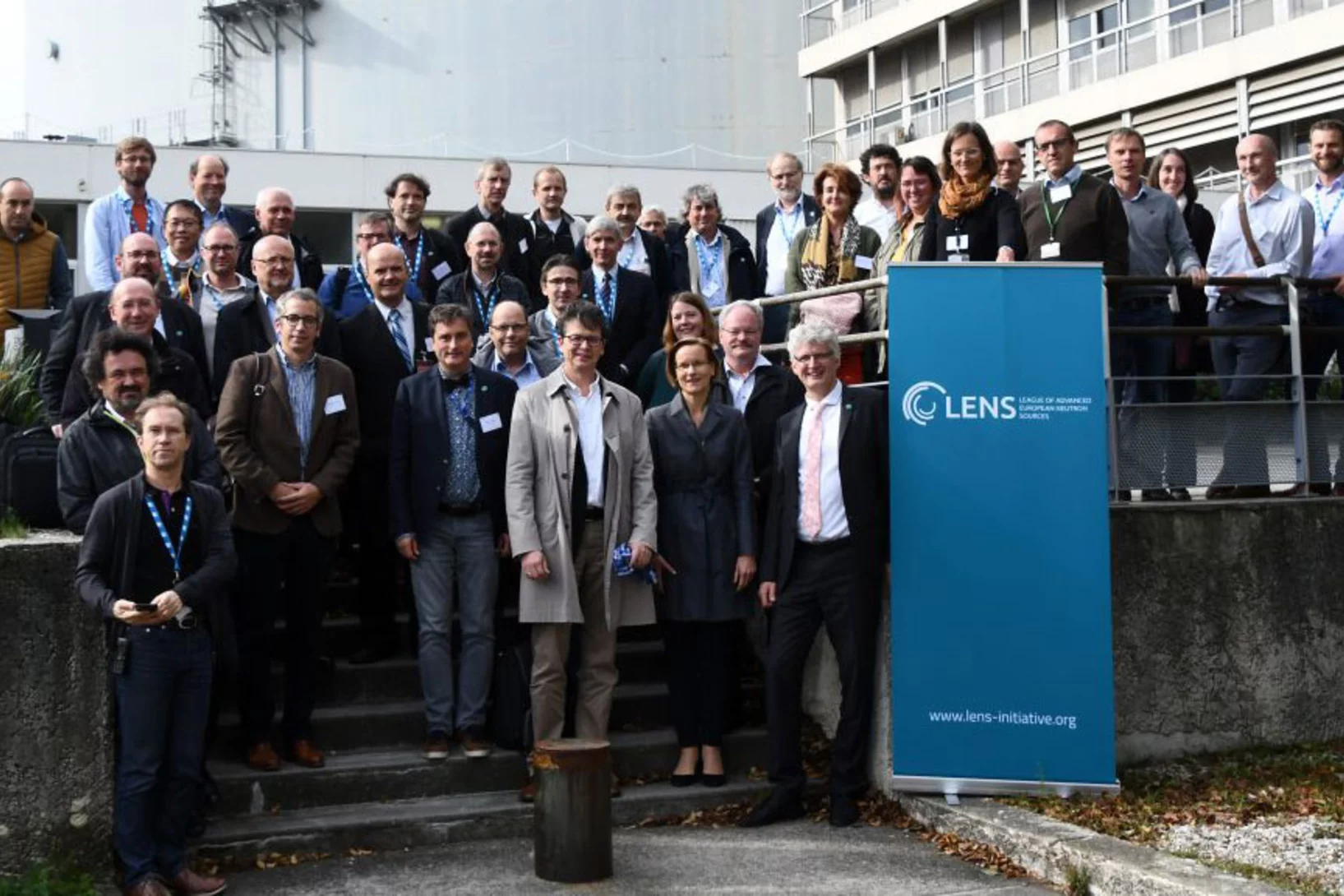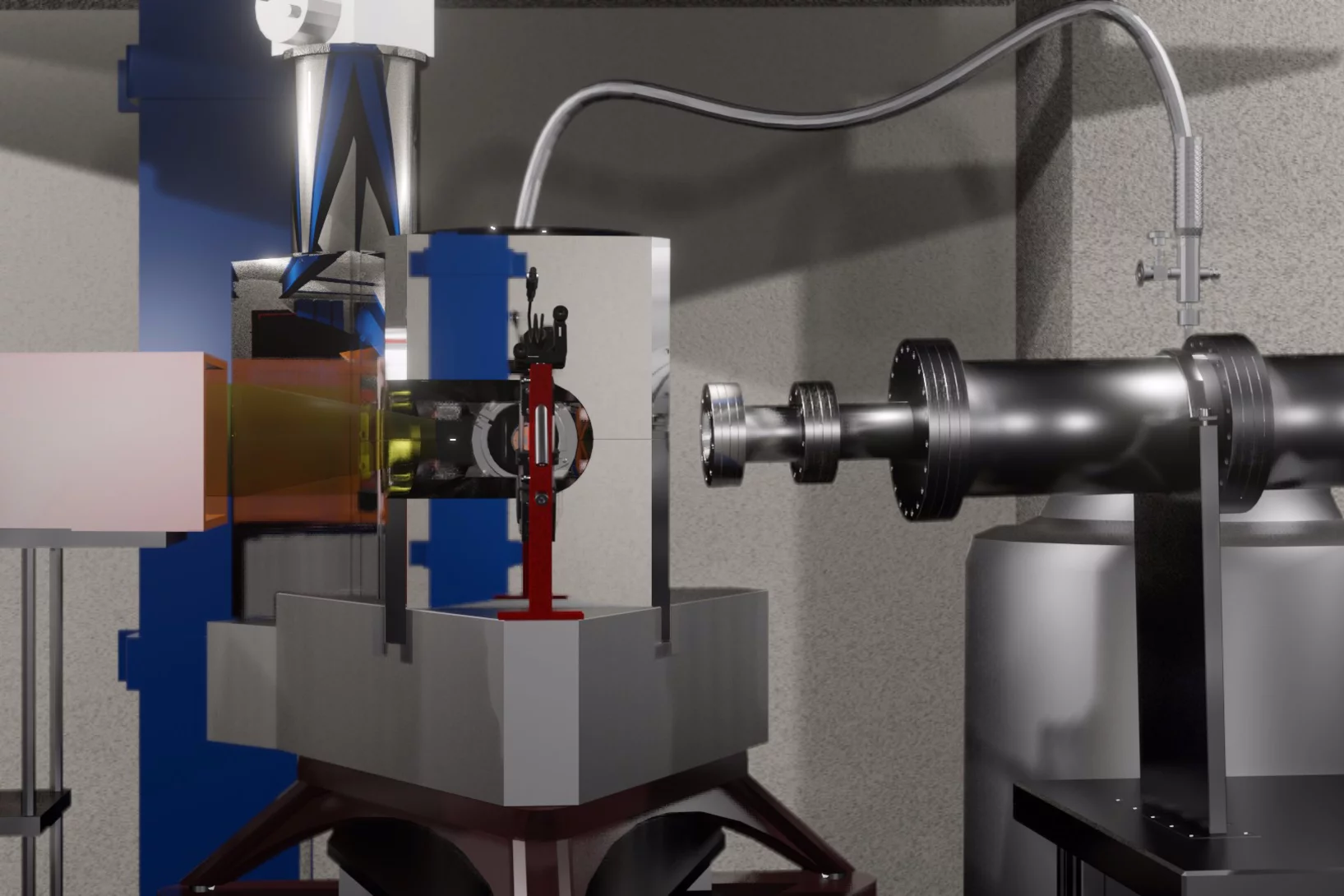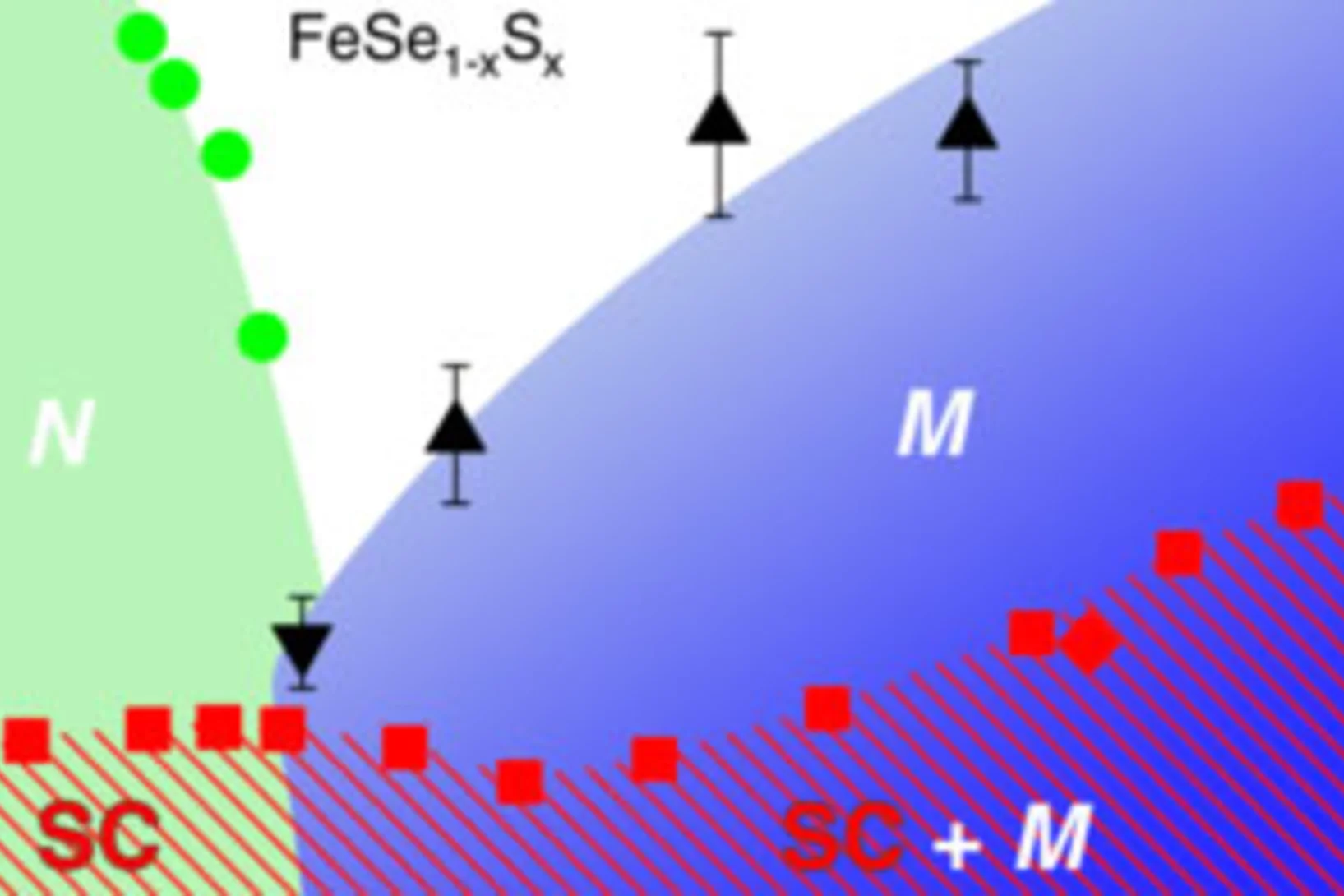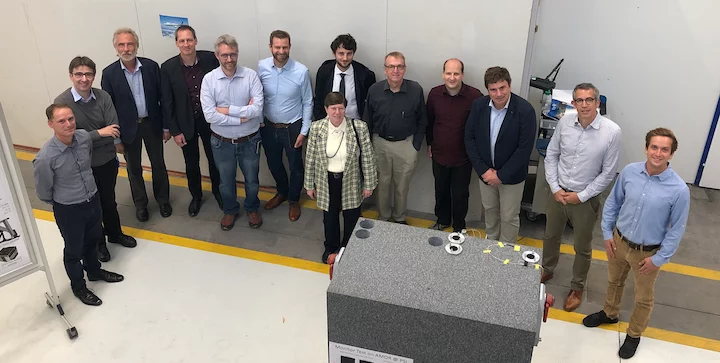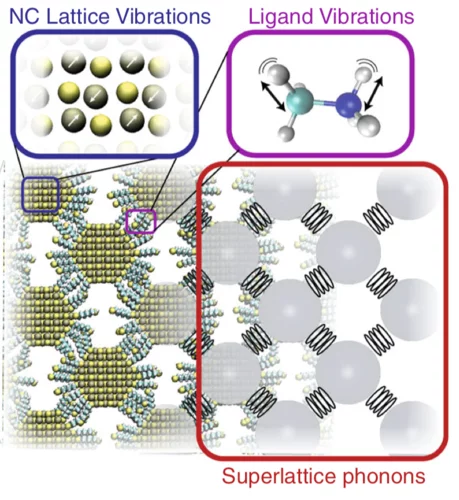Here you find current and previous news from the PSI Center for Neutron and Muon Sciences.
Observation of a Charge-Neutral Muon-Polaron Complex in Antiferromagnetic Cr2O3
We report a comprehensive muon spin rotation (μSR) study of the prototypical magnetoelectric antiferromagnet Cr2O3. We find the positively charged muon (μ+) occupies several distinct interstitial sites and displays a rich dynamic behavior involving local hopping, thermally activated site transitions, and the formation of a charge-neutral complex composed of a muon and an electron polaron.
A link between quantum magnetism and electronic band topology
Muon spin rotation experiments establish a quantitative link between the magnetic and topological electronic properties of the kagome magnet Co3Sn2S2 — and demonstrate effective ways for tuning these properties.
Tunable anomalous Hall conductivity through volume-wise magnetic competition in a topological kagome magnet
Magnetic topological phases of quantum matter are an emerging frontier in physics and material science. Along these lines, several kagome magnets have appeared as the most promising platforms. Here, we explore magnetic correlations in the kagome magnet Co3Sn2S2. Using muon spin-rotation, we present evidence for competing magnetic orders in the kagome lattice of this compound.
Possible room-temperature signatures of unconventional 4f-electron quantum criticality in YbMn6Ge6−xSnx
We investigate the Sn composition dependence of the Yb valence and local magnetization in YbMn6Ge6−xSnx (4.25 ≤x≤ 5.80) using x-ray absorption spectroscopy (XANES) and x-ray magnetic circular dichroism at the Yb L3 edge. In these materials, where Mn is ferromagnetically ordered, we observe a decrease of the Yb valence upon reducing the chemical pressure by Sn doping and a suppression of the Yb magnetic moment for strongly hybridized 4f states (ν ∼ 2.77).
Magnetism and anomalous transport in the Weyl semimetal PrAlGe: possible route to axial gauge fields
In magnetic Weyl semimetals, where magnetism breaks time-reversal symmetry, large magnetically sensitive anomalous transport responses are anticipated that could be useful for topological spintronics. The identification of new magnetic Weyl semimetals is therefore in high demand, particularly since in these systems Weyl node configurations may be easily modified using magnetic fields. Here we explore experimentally the magnetic semimetal PrAlGe, and unveil a direct correspondence between easy-axis Pr ferromagnetism and anomalous Hall and Nernst effects.
Anna Sótér starts Ambizione fellowship
Anna Sótér has started an Ambizione fellowship at ETH Zurich and PSI. Her project is dedicated to developing a novel source of cold muonium atoms, which will be used for a new interferometry experiment that enables testing the weak equivalence principle by directly probing gravitational interaction of antimatter.
Well varnished violins play longer
Traditionally, violins are varnished to protect them from humidity and other environmental influences. At PSI, a scientific team has investigated how different coatings affect the instrument. Under no circumstances, they found, should anyone try to do without varnish completely.
Topological Magnetic Phase in the Candidate Weyl Semimetal CeAlGe
We report the discovery of topological magnetism in the candidate magnetic Weyl semimetal CeAlGe. Using neutron scattering we find this system to host several incommensurate, square-coordinated multi-k⃗ magnetic phases below TN. The topological properties of a phase stable at intermediate magnetic fields parallel to the c axis are suggested by observation of a topological Hall effect.
Modelling and simulation pay off
Researchers in PSI's Laboratory for Scientific Computing and Modelling solve the most complex problems through a combination of theory, modelling, and high-performance computing. With powerful computers, they simulate the smallest molecules or large research facilities.
Workshop on the Physics of Fundamental Symmetries and Interactions
The 5th Workshop on the Physics of Fundamental Symmetries and Interactions (PSI2019) took place from 20 to 25 October 2019 at PSI, bringing together 200 scientists from all over the world working on some of today’s most precise particle-physics experiments at the low-energy frontier.
Determination and evaluation of the nonadditivity in wetting of molecularly heterogeneous surfaces
Every folded protein presents an interface with water that is composed of domains of varying hydrophilicity/-phobicity. Many simulation studies have highlighted the nonadditivity in the wetting of such nanostructured surfaces in contrast with the accepted theoretical formula that is additive. We present here an experimental study on surfaces of identical composition but different organization of hydrophobic and hydrophilic domains.
TecDay: LMX meets Hohe Promenade
TecDay is an SATW initiative that was developed at the Kantonsschule Limmattal in 2007 and has since been rolled out to more than 60 secondary schools across Switzerland. By the end of 2017 it had reached around 45,000 students and 5,000 teachers. In December 2019 the LMX contributed in one module, that received a total of 16 students over the course of a morning. The module was organized in three different “stations”, each one focusing on one topic or area that the group is working on.
Field-induced double spin spiral in a frustrated chiral magnet
Magnetic ground states with peculiar spin textures, such as magnetic skyrmions and multifunctional domains are of enormous interest for the fundamental physics governing their origin as well as potential applications in emerging technologies. Of particular interest are multiferroics, where sophisticated interactions between electric and magnetic phenomena can be used to tailor several functionalities.
The multi-layered physics of layered superconductors
Muon spin rotation experiments provide unique microscopic insight into the superconductivity and magnetism of transition metal dichalcogenides — and reveal complex and unconventional patterns, hinting towards a common mechanism for and electronic origin of ‘unconventional’ superconductivity.
Christian Rüegg appointed new Director of the Paul Scherrer Institute
On 27 November 2019, at the recommendation of the ETH Board, the Federal Council has appointed Christian Rüegg as the new director of the Paul Scherrer Institute PSI. The 43-year-old will take over from Thierry Strässle, who has headed the institute on an interim basis since the beginning of the year. Mr Rüegg is currently head of the Neutrons and Muons Division at the PSI. He will take up his new position on 1 April 2020.
Distortion mode anomalies in bulk PrNiO3: Illustrating the potential of symmetry-adapted distortion mode analysis for the study of phase transitions
The origin of the metal-to-insulator transition (MIT) in RNiO3 perovskites with R = trivalent 4f ion has challenged the condensed matter research community for almost three decades. A drawback for progress in this direction has been the lack of studies combining physical properties and accurate structural data covering the full nickelate phase diagram. Here we focus on a small region close to the itinerant limit (R = Pr, 1.5K < T < 300K), where we investigate the gap opening and the simultaneous emergence of charge order in PrNiO3.
Radionuclides for cancer therapy are in great demand
Radionuclides open up new options for treating cancer. Christian Rüegg, head of the Research with Neutrons and Muons Division at PSI, explains the significance of the Swiss Spallation Neutron Source SINQ at PSI.
Pinning down the proximate Kitaev spin liquid
A study of the extended Kitaev model on the honeycomb lattice that factors in Kitaev, Heisenberg and off-diagonal symmetric interactions provides both a definitive answer on proximate Kitaev states and an essential guide to the physics of candidate Kitaev materials.
MaNEP Materials Discovery Workshop and Forum Meeting at the University of Bern
The MaNEP Network met at the University of Bern, Department of Chemistry and Biochemistry, for a Workshop on Materials Discovery and its annual Forum Meeting. The community discussed potential future joint initiatives and the role of MaNEP.
Advances in artificial spin ice
Artificial spin ices consist of nanomagnets arranged on the sites of various periodic and aperiodic lattices. They have enabled the experimental investigation of a variety of fascinating phenomena such as frustration, emergent magnetic monopoles and phase transitions that have previously been the domain of bulk spin crystals and theory, as we discuss in this Review.
Magnetic-Field Control of Topological Electronic Response near Room Temperature in Correlated Kagome Magnets
Strongly correlated kagome magnets are promising candidates for achieving controllable topological devices owing to the rich interplay between inherent Dirac fermions and correlation-driven magnetism. Here we report tunable local magnetism and its intriguing control of topological electronic response near room temperature in the kagome magnet Fe3Sn2 using small angle neutron scattering, muon spin rotation, and magnetoresistivity measurement techniques.
On the way to intelligent microrobots
It is reminiscent of a paper bird made with the help of the Japanese folding art origami: a microrobot that uses the force of magnetic fields to move. In the future, such small machines could be used, for example, in medical operations.
Nanomagnetic encoding of shape-morphing micromachines
Shape-morphing systems, which can perform complex tasks through morphological transformations, are of great interest for future applications in minimally invasive medicine, soft robotics, active metamaterials and smart surfaces. With current fabrication methods, shape-morphing configurations have been embedded into structural design by, for example, spatial distribution of heterogeneous materials, which cannot be altered once fabricated.
One Proximate Kitaev Spin Liquid in the K-J-Γ Model on the Honeycomb Lattice
In addition to the Kitaev (K) interaction, candidate Kitaev materials also possess Heisenberg (J) and off- diagonal symmetric (Γ) couplings. We investigate the quantum (S=1/2) K-J-Γ model on the honeycomb lattice by a variational Monte Carlo method. In addition to the “generic” Kitaev spin liquid (KSL), we find that there is just one proximate KSL (PKSL) phase, while the rest of the phase diagram contains different magnetically ordered states.
European neutron facilities come together for LENS General Assembly
The League of advanced European Neutron Sources (LENS) with the participation of PSI held its second General Assembly at Institut Laue-Langevin (ILL) together with meetings of its five working groups and the LENS Executive Board. The meetings brought the consortium’s operational working groups together with the leaders of the LENS member facilities to advance priority actions for the organisation in the months to come.
Take a flight through ESTIA
PSI is entirely responsible to build the polarised neutron reflectometer ESTIA at the European Spallation Source ESS in Lund, Sweden. The lead ESTIA scientist Artur Glavic (LNS/NUM) has now simulated a virtual tour of the neutrons travelling through the instrument from the focusing neutron guide to the detector.
PSI hosting meeting of the LENS working group on technology development and operation
On October 1 and 2, the Laboratory of Neutron and Muon Instrumentation (LIN) hosted the first meeting of the working group on “Synergies in Technology Development and Operation” of the League of Advanced European Neutron Sources, LENS, to kick off developments aimed at creating a new generation of neutron technology.
Extended Magnetic Dome Induced by Low Pressures in Superconducting FeSe(1 − x)Sx
We report muon spin rotation and magnetization measurements under pressure on Fe1+δSe1−xSx with x ≈ 0.11. Above p ≈ 0.6 GPa we find a microscopic coexistence of superconductivity with an extended dome of long range magnetic order that spans a pressure range between previously reported separated magnetic phases.
Visit of ESS Council to Switzerland
On 24 September the Paul Scherrer Institut was the venue of a meeting between the top supervisory board of the European Spallation Source ESS to be built in Lund, Sweden, and representatives of the Swiss government from SERI. The chair and the vice chair of the ESS Council, Beatrix Vierkorn-Rudolph and Kurt Clausen, respectively came to Switzerland to discuss the Swiss In-Kind Contributions to the largest spallation neutron source under construction in Sweden.
Nanocrystal superlattices as phonon-engineered solids and acoustic metamaterials
Phonon engineering of solids enables the creation of materials with tailored heat-transfer properties, controlled elastic and acoustic vibration propagation, and custom phonon-electron and phonon-photon interactions. These can be leveraged for energy transport, harvesting, or isolation applications and in the creation of novel phonon-based devices, including photoacoustic systems and phonon-communication networks.




